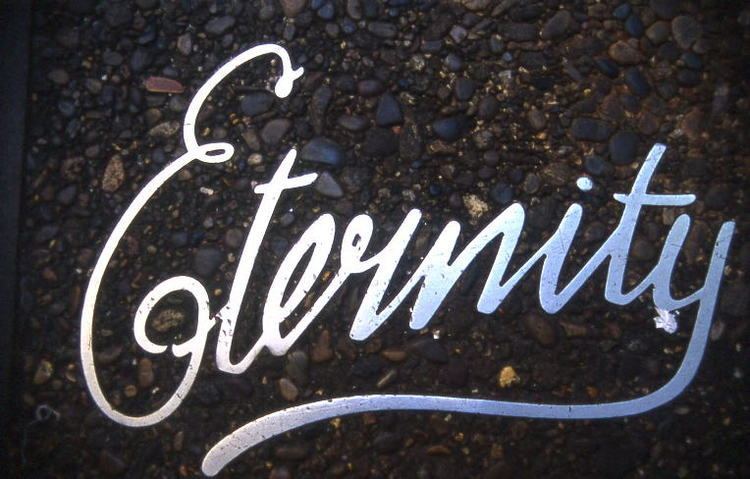 | ||
The word Eternity was a graffito tag recorded over an approximate 35-year period from 1932 to 1967, written numerous times in chalk in the streets of Sydney, Australia. The word had been written by Arthur Stace, an illiterate former soldier, petty criminal and alcoholic who became a devout Christian in the late 1940s. For years after his conversion up until his death in the 1960s, Stace walked the streets of Sydney at night writing the single word "Eternity" on walls and footpaths in his unmistakable copperplate handwriting. Stace's identity remained unknown until it was finally revealed in a newspaper article in 1956. It is estimated Stace wrote the word over half a million times.
After Stace's death, the Eternity signature lived on. Australian contemporary artist, illustrator and filmmaker Martin Sharp noticed it and celebrated Stace's one-man campaign in many of his works. More recently, some Australian Christian groups, including those at universities, have run evangelistic campaigns whose promotion involved chalking "Eternity", after Stace's fashion, on footpaths.
As part of the fireworks on Sydney Harbour to mark New Year's Day of the year 2000, the graffito "Eternity" was illuminated on the Sydney Harbour Bridge. This moment was symbolically recreated later that year as part of the Sydney 2000 Olympics Opening Ceremony, beamed to billions of television viewers worldwide.
In 2001 the Council of the City of Sydney was granted a trademark (817532) on the script in order to protect it from indiscriminate commercial use.
The newspaper Eternity was named after the tag. Founded in 2009, it has a broad circulation amongst Christian groups in Australia.
One of the works by English street artist Banksy during his October 2013 "residency" in New York City depicts a worker washing away the Eternity tag.
